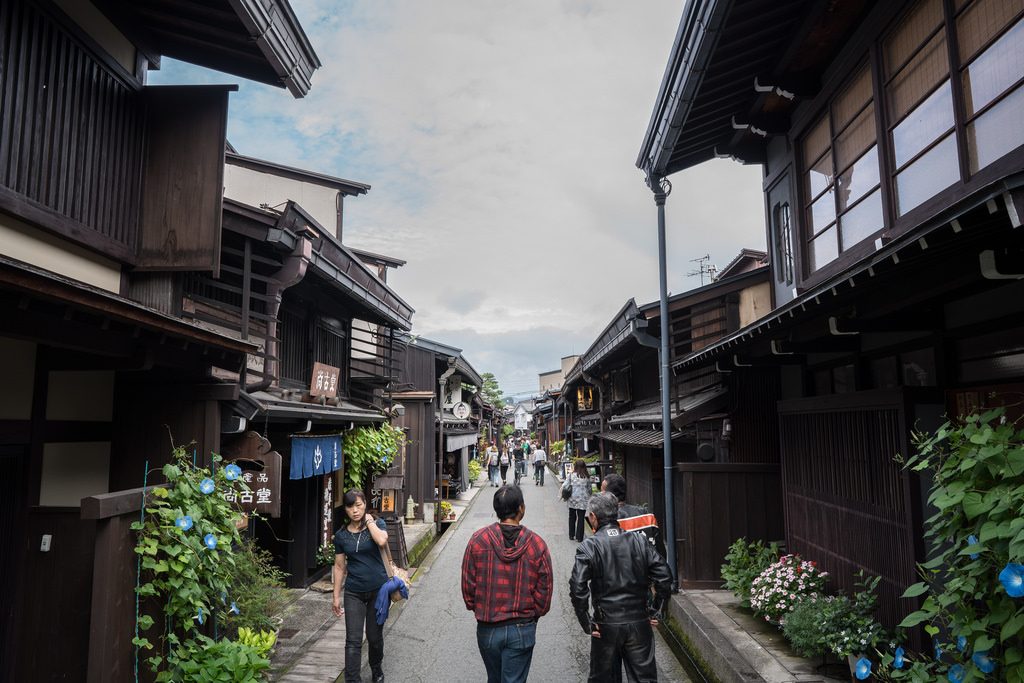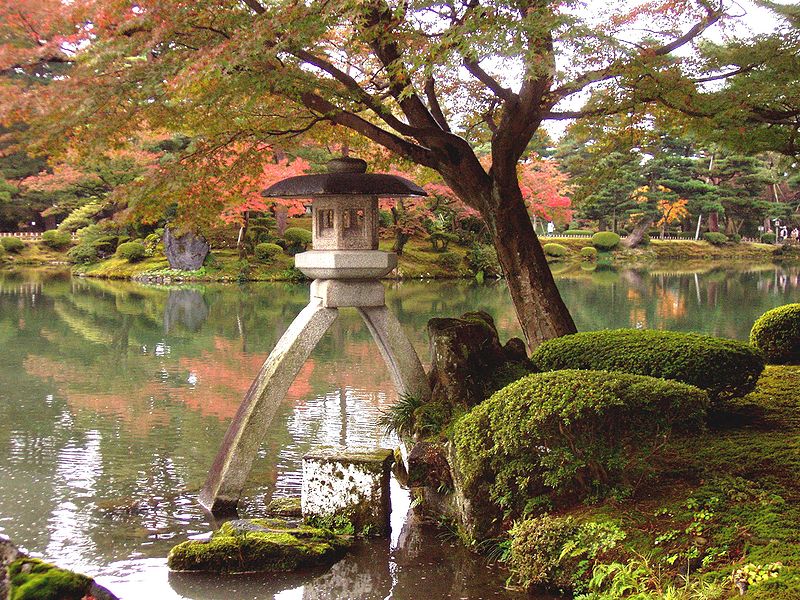When many international travelers think of Japan, they call to mind visions of crowded “neon cities” such as Tokyo. Japan, however, has a much gentler side, complete with rolling hills and rustic charm. The town of Takayama and the Japanese Alps mountain range in the Hokuriku region represent one such rural destination.
The Japanese Alps are the highest mountains in the Honshu island and all of Japan. The three ranges (Hida mountains, Kiso Mountains, Akaishi Mountains) also house the longest and deepest gorge in the country, six volcanoes, and two lava plateaus. The natural beauty of the range has earned it the title of the “sacred highland.”
Why not make Takayama a stop on your next Japanese vacation? If you would like to discover the unique destinations in and around the town of Takayama and Kanazawa, consider the following travel tips.
Table of Contents
Getting to Takayama
Below is a table that illustrates the best ways to get to Takayama from some of Japan’s most popular cities among tourists: Tokyo, Osaka and Kyoto.
| Departure city | Mode of transport | Approx. journey time | Approx. cost (¥) | Covered by the JR Pass? |
| Tokyo | Train via Nagoya or Toyama | 4.5 hours | ¥16,000 | ✅ Yes |
| Highway Bus (Keio/Nohi) | 5.5 hours | ¥8,000 | ❌ No | |
| Osaka | Train via Nagoya | 3.5 hours | ¥11,500 | ✅ Yes |
| Highway Bus (Kintetsu/Nohi) | 5.5 hours | ¥7,000 | ❌ No | |
| Kyoto | Train via Nagoya | 3 hours | ¥10,500 | ✅ Yes |
| Highway Bus (Kintetsu/Nohi) | 4.5 hours | ¥6,500 | ❌ No |
Tokyo to Takayama by train
Takayama is easy to access using your Japan Rail Pass. If traveling from Tokyo to Takayama, first take the JR Tokaido Shinkansen to Nagoya with the JR Pass.
Alternatively, you may take the Hokuriku Shinkansen from Tokyo to Toyama.
From either Nagoya or Toyama, you should take the JR Hida Limited Express to Takayama. The journey from Tokyo to Takayama takes about 4.5 hours in total, during which you can enjoy magnificent panoramic views of the Japanese countryside.
By bus
There are several daytime highway bus round trips per day between Tokyo (Busta Shinjuku) and Takayama. These services are offered by both Keio and Nohi Bus.
The one-way journey takes around 5.5 hours and costs approximately 8,000 yen. Some services offer overnight buses during select periods of the year. This a convenient option if you’re a more budget-conscious traveler.
Online reservations can be made through Willer.
Osaka and Kyoto to Takayama by train
If traveling from Kyoto or Osaka to Takayama, your journey will be very similar. From Shin-Osaka Station or Kyoto Station, take the Hikari or Kodama trains on the Tokaido Line to Nagoya.
Then take the JR Hida Limited Express (also known as Wide View) from Nagoya to Takayama. The journey from Osaka takes about three and a half hours or about three hours from Kyoto.
By bus
Buses operated by Kintetsu and Nohi Bus run several times daily between Osaka (departing from Higashi-Umeda and Namba OCAT) and Takayama. The journey takes about 5.5 hours and costs around 7,000 yen one way.
If traveling from Kyoto, buses depart from Kyoto Station (Hachijo side) and reach Takayama in approximately 4.5 hours. The one-way fare is around 6,500 yen. Online reservations are also available through Willer

Most attractions are within walking distance of the train station, but if you plan on taking a sightseeing tour or visiting the Hida no Sato or Matsuri no Mori museums, the Takayama Hida Bus Center is a mere 10-minute walk from the town center.
Things to do around Takayama
Takayama offers a taste of the Japanese culture of yesterday and today. The area holds plenty of indulgences for the avid sightseer – green fields dotted with rustic farmhouses, Japanese gardens, shrines, temples, castle ruins, and well preserved historic buildings, such as Edo period houses and samurai dwellings. The old town can be toured by rickshaws called jinrikisha.

There are also numerous onsen, or hot springs, available to provide rest and relaxation. Many of the onsen are of the traditional outdoor type. Locally made handcrafts and goods are available in the town’s morning market. If in need of refreshment, you can visit a traditional teahouse or a sake brewery.
Hida Folk Village
Besides, you can take a local bus to Hida Folk Village: a nearly 100,000 square meter park including over 30 buildings (mostly traditional sloped-and thatched-roof houses), gardens and a beautiful lake. This model of a folk village holds recreates Hida’s historical look and traditions, and is the home to several National Cultural Treasures.

Japanese Alps National Park
The nearby Japanese Alps National Park, also called Chubu Sangaku Kokuritsu Koen, is a delight to nature lovers. There, bird watchers may catch a glimpse of the golden eagle or rock ptarmigan. Available activities include skiing, hiking, and picnicking, as well as riding the Shin-Hotaka Ropeway and relaxing at the Oku-Hida Spa Village.
Takayama Festival
The Takayama Festival takes place each spring and fall, celebrating the city’s history from the fifteenth to nineteenth centuries. The festival is held at the Sakurayama Hachimangu Shrine, and begins with a parade of one thousand people in full costume followed by ten floats called yatai. The festivities include traditional dances, marionette puppet displays, and other performances.
Shirakawa-go village
During your stay in Takayama, you may wish to embark on a day trip to Shirakawa-go. This area, complete with thatched roof farmhouses used for the cultivation of silkworms, has been declared a UNESCO World Heritage Site. You can even lodge in one of the historic buildings overnight.

There are no train services to Shirakawa-go, but the Nohi Bus is available from Takayama. The trip lasts approximately one hour. An information center, lockers, shops, and restaurants can be found in the historic buildings near the Shirakawa-go bus stop.
Many travelers also seize the opportunity to visit the neighboring village of Gokayama (30 minutes by bus) and the valley of the Shogawa River.
Kanazawa
Kanazawa, nestled between the mountains and the Sea of Japan, is often the next stop for many tourists to Takayama. In Kanazawa, you will find one of Japan’s most beautiful gardens, the Kenrokuen.
The nearby Kanazawa Castle Park, built in 1583, was once the home of the feudal Maeda family who founded the Kenrokuen garden. Because it has not experienced wars or natural disasters, the historical structures of Kanazawa are well-preserved.

The city is also home to the Twenty-first Century Museum of Contemporary Art, the Kanazawa Noh Museum, the Ishikawa Prefectural Museum of Art, and the Shiinoki Cultural Complex. The mild weather of this area makes it a sublime destination all year round.
Kamikochi
Nestled in the Northern Alps within Chubu Sangaku National Park, Kamikochi is a pristine highland valley offering mountain views, rivers, and seasonal alpine colors.
It’s a car-free zone, reachable from Takayama via Hirayu Onsen by bus. It offers treks for a variety of tastes, ranging from peaceful riverside strolls to ambitious climbs like Mt. Yarigatake.
The area is open from mid-April to mid-November.
Ride the Shinhotaka Ropeway
The Shinhotaka Ropeway is one of Japan’s most impressive cable cars. It will take you 2,156 meters above sea level.
From the upper observation deck, you’ll enjoy panoramic views across snow-capped peaks, including Mt. Hotaka and Mt. Yake. It’s a great year-round excursion and easily accessible by bus from Takayama in under two hours.
